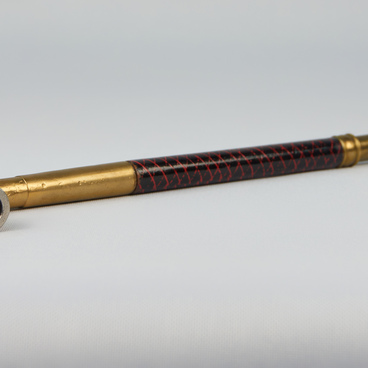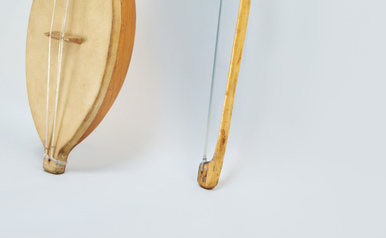The tradition of tobacco smoking led to the spread of smoking accessories in Tuvan society, such as a smoking pipe (danza), flint (ottuk), tobacco pouch (taakpy khavy), snuffbox (khoorge).
A smoking pipe is a frequent object in the ancient burials in Tuva. Nevertheless, the fragmentary information from archaeology does not allow us to determine the smoking method used by ancient tribes of Tuva. Later materials indicate that Tuvans first learned about smoking after the spread of shamanism on the territory of Tuva, which became the main religious belief of ancient Turkic, Kyrgyz and other ethnic groups of Sayan-Altai and Central Asia in the 11th–13th centuries.
When a shaman finished performing a ritual — shouting incantations to the beat of a tambourine, all those sitting in the yurt exchanged pipes with him, which was considered an obligatory ritual. The spreading of tobacco and the establishment of the tobacco smoking tradition are connected with the domination of the Qing Empire of China in the Uryanghai region. Rustic tobacco, leaf tobacco, and Chinese tobacco became the most popular goods of Chinese and Russian merchants.
According to Tuvan customs, smoking tobacco is one of the ways of showing hospitality. It was customary to treat the other person with tobacco in order to win them over.
A Tuvan man could start snuffing or smoking tobacco at the fourth age, that is, from the age of 40, when he was allowed to go on a long journey, take part in mass celebrations, say good wishes in public. Interestingly, there is no gender restriction on tobacco use in traditional Tuvan society. Tuvan women also smoked tobacco. They were allowed to smoke after marriage, when they had had children and raised them, by the age of 35–40, just like men.
According to Mikhail Fedorov, it is known that even if a man did not use tobacco, he still had to have a pipe, a pouch of tobacco with which he could treat his interlocutor. A Tuvan proverb says: “Dashka kharyyzy tavaar, danza kharyyzy daryy” (“You can wait with the return cup, but you must give the pipe to the guest immediately”).
The tobacco pouch (taakpy khavy) is made of velvet and has a trapezoidal shape. A sickle-shaped iron cleaner (chushkuush) for a smoking pipe and a bowl-shaped ashtray (songuluur) for lighting are attached with a thin rope. The velvet base is decorated with a traditional combination of Tuvan national ornamental motifs for decorating tobacco pouches.




